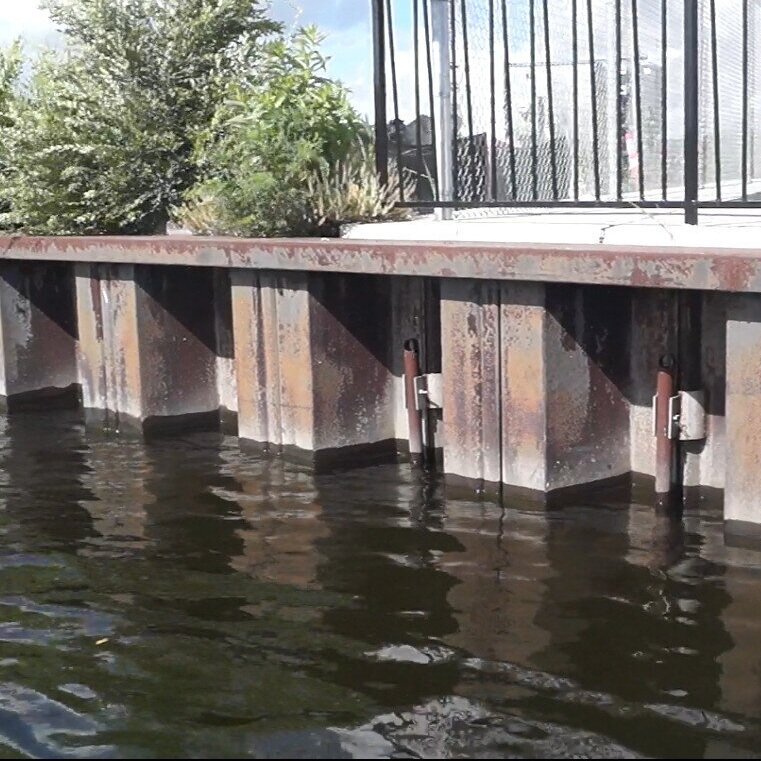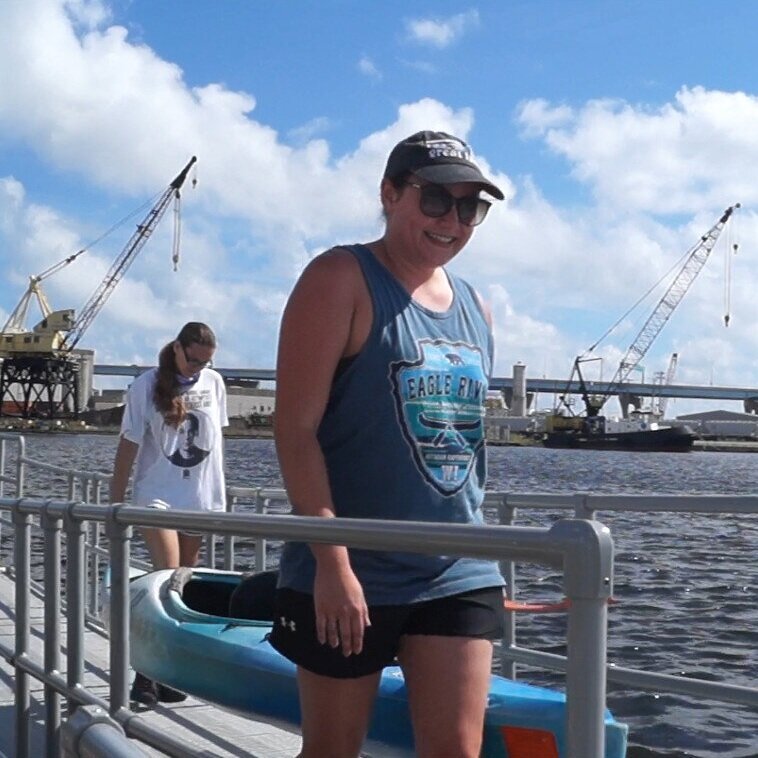Liz Ulrich
Investigating Harbor Habitats
Meet Liz. She’s an undergraduate student doing summer research with Dr. John Janssen at the UW-Milwaukee School of Freshwater Sciences. Liz gets to kayak to fish “habitat hotels” that the nonprofit Harbor District, Inc. has installed along the steel sheet pile in Milwaukee’s Inner Harbor. She then uses an underwater camera to survey these innovative contraptions—built of old fish fry baskets and designed to provide a safe space for young fish to hang out. She finds that some plants have died but others are doing well, which informs how Harbor District, Inc. will re-plant them for long-term success in a harsh environment with a lot of wave action against the vertical walls. She’s also captured video of adult and baby bass. Inspired by the movie Fly Away Home, Liz has a passion for nature photography and one day hopes to work for the International Crane Foundation in Baraboo, Wis. Liz became fascinated by the aquatic world after some classes taught by Dr. John Janssen, and is learning to appreciate how the aquatic and terrestrial food webs depend on each other.
Habitat hotels are anchored to steel sheet pile.
There are about 40 habitat hotels spread throughout the Harbor District, hung from the corrugated steel sheet piling at many places that passersby may not even notice. Some hotels are found below segments of the Riverwalk. Others are near the School of Freshwater Sciences and throughout the Inner Harbor. In 2020, Liz’s work using underwater cameras revealed that unfortunately many basket plants failed to survive harsh wave action. In late summer the team replanted the baskets with hardy species, learning from the long-term experiment what works well in this interesting environment. Liz says they are also considering adding plants that will be visible at the surface to kayakers or Riverwalk pedestrians who take a deeper look at their surroundings. The project is about improving fish habitat connectivity between what earlier research identified as the harbor’s “hotspots.” But it’s also about signaling the bipeds above that something intriguing is going on below the water’s surface.

Habitat hotels are anchored to steel sheet pile.

SFS student researcher Liz Ulrich in 2020.

